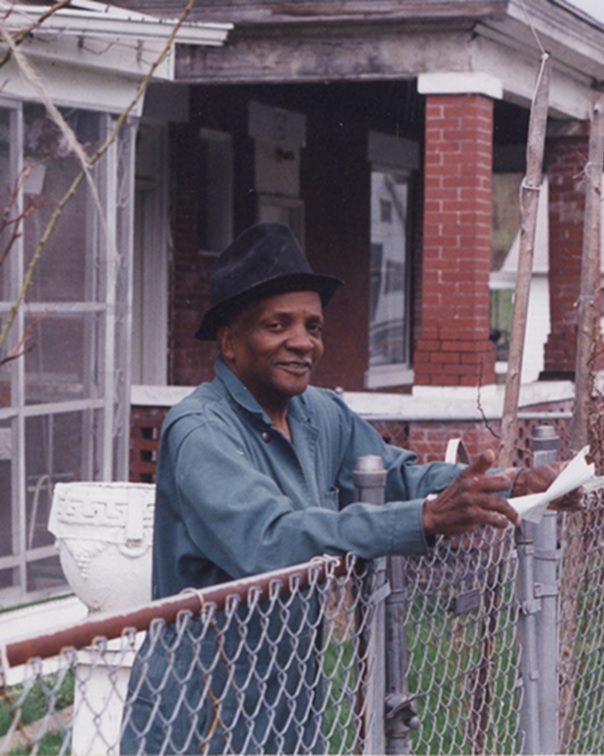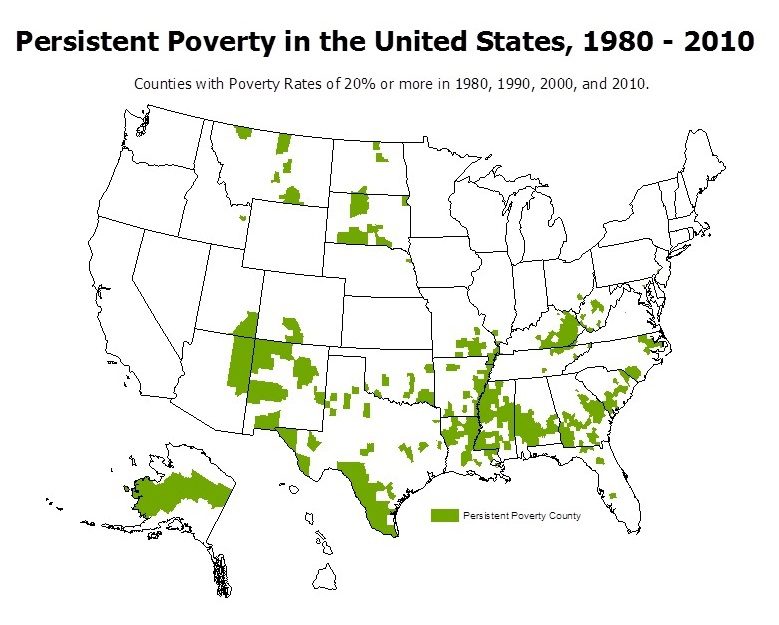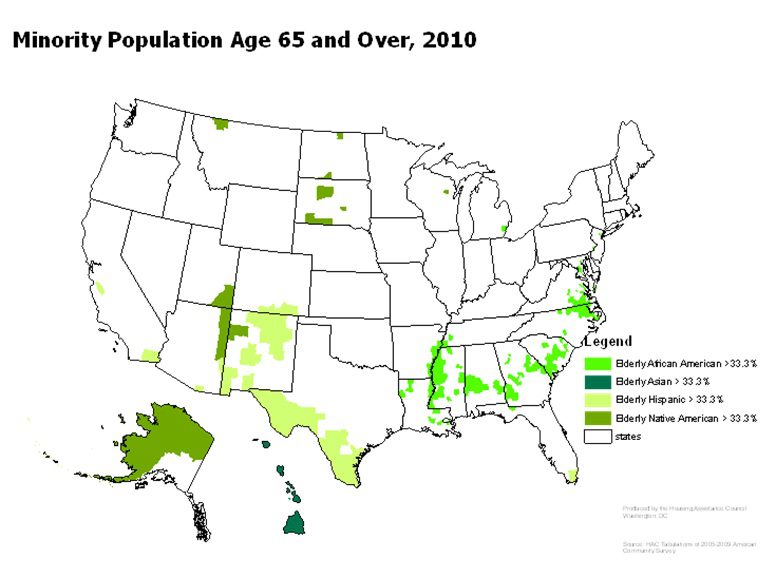As I’ve discussed in a previous blog post, rural America is aging faster than the rest of the country. Delving a little deeper into some of the characteristics of this population can provide insights.
One thing that has especially stood out to me through my research on rural seniors is their apparent lack of diversity. Rural seniors are one of the least diverse groups in the nation with minorities accounting for only 10 percent of the population compared to 20 percent of seniors nationally—but looking solely at those numbers leaves some out important details.
An interesting trend emerges when we look at where minority seniors live in rural America. Many minority seniors live in counties where they comprise over one-third of the entire senior population. Let’s refer to these as “minority counties.” So even though few rural seniors are minorities, these individuals are often clustered in very specific regions across the country. Such clustering can make the presence of this already small population even less noticeable if you aren’t looking in the right places.
Rural minority counties are predominately located in historically high-needs regions that have experienced persistent poverty and limited economic opportunity over the decades. A comparison of the maps below shows where these overlays exist. Rural regions with high percentages of minority seniors include the Mississippi Delta and the rural Southeast, Native American lands including Alaska Native Villages, and the colonias along the U.S.-Mexico border. In fact, minorities make up almost a quarter of all seniors experiencing poverty in rural America. This is a gross overrepresentation considering they comprise just a tenth of the senior population. Hawaii is the only region included on the map that has rural minority counties but has not experienced persistent poverty conditions.
Sadly, these patterns are nothing new, and these high-needs regions have remained impoverished for decades. Cyclical poverty affects individuals and their housing at all stages throughout their lives, including old age. Seniors have different housing needs, however, due to declining health, physical impairments, a need for increased assistance with daily activities, and other major life changes including the loss of a loved one. This makes proper housing provision and maintenance even more critical. At older ages, support services become more important as well. These services are often simply not available or affordable for many in these high-needs areas. All these factors make it more difficult for rural minority seniors either to age safely in place or to access quality senior housing with services.
According to the Bipartisan Policy Center, the proportion of elderly minorities will increase to 29 percent by 2030. Although this number refers to the national population, it is safe to assume that since rural America is aging faster, the percent of rural minority seniors will increase there too. The extent of their housing needs, already amplified in the high-needs regions, will grow as well.
It is important to think about how to best ensure that this overlooked group is not forgotten. The historic patterns of poverty, coupled with limited resources and services for minority seniors in rural America, must be addressed. Housing rights matter, and no group or region should be overlooked.







Comments